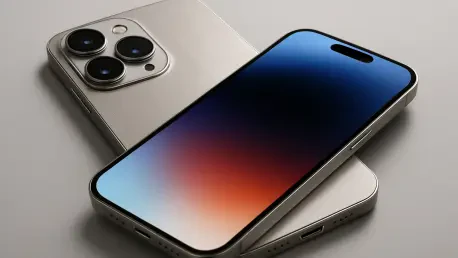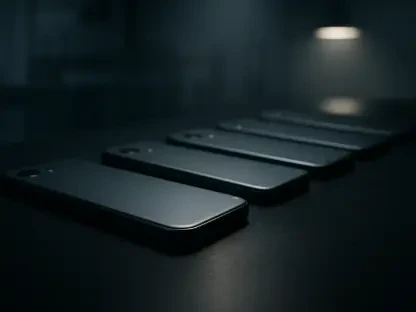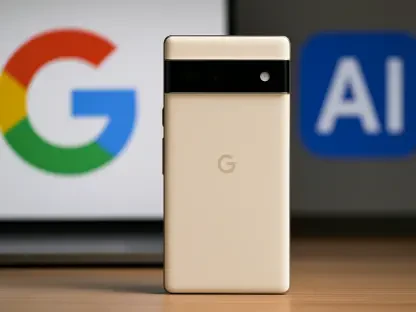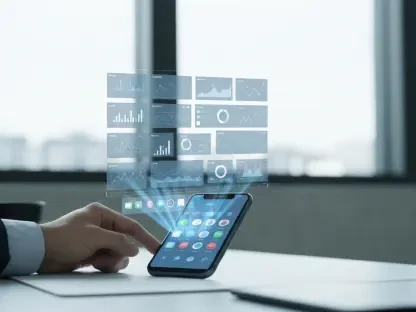I’m thrilled to sit down with Oscar Vail, a renowned technology expert whose insights into emerging fields like quantum computing, robotics, and open-source projects have made him a trusted voice in the industry. Today, we’re diving into the buzz surrounding the iPhone 17 series, particularly the striking redesigns of the iPhone 17 Pro and Pro Max. Our conversation explores the innovative design choices, the balance of aesthetics and functionality, and what these changes mean for Apple fans and tech enthusiasts alike. From the expanded camera module to the shift in materials and subtle two-tone effects, Oscar shares his expert perspective on how these updates reflect Apple’s evolving approach to mobile technology.
What caught your attention most when you first heard about the rumored designs for the iPhone 17 Pro and Pro Max?
Honestly, I was intrigued but skeptical at first. The idea of a full-width camera module—what Apple calls a ‘plateau’—felt like a bold move away from their signature minimalist look. I’ve always associated Apple with sleek, understated designs, so this seemed almost jarring. And the rumored two-tone back panel? After years of single-color finishes, I couldn’t quite wrap my head around why they’d go that route. It felt like a risk, and I wasn’t sure it would pay off aesthetically.
How did your perspective shift after seeing the final product in hands-on previews?
Seeing the actual devices was a game-changer for me. The early renders and mockups didn’t do justice to the refined execution of the final design. The camera plateau looked purposeful rather than clunky, and the two-tone effect was far more subtle than I expected. It wasn’t just about looks—learning the reasoning behind these choices during Apple’s event helped me appreciate the thought process. The design felt cohesive and intentional, which flipped my initial doubts into genuine admiration.
Let’s dive into the camera plateau. What makes this design choice click for you now that you understand its purpose?
Once I learned it’s about creating more internal space for a larger battery, it made total sense. Battery life is a constant pain point for users, and if a slightly bulkier camera housing solves that, I’m all for it. We’re already used to phones not lying flat due to protruding cameras, so this feels like a logical next step. Apple seems to be prioritizing function over shaving off a few millimeters, and I think that’s a smart call for power users who rely on their devices all day.
Speaking of materials, what’s your take on Apple’s switch from titanium to aluminum in the chassis?
I think it’s a fascinating pivot. The functional reasoning—better heat dissipation—really resonates with me, especially as phones keep getting more powerful and heat management becomes critical. Aesthetically, the aluminum gives the phone a rugged, industrial vibe that I find appealing, even if it might not match titanium’s durability. It’s a trade-off, but one that aligns with making the device more practical for heavy use, which I respect.
The two-tone back panel turned out to be more understated than some leaks suggested. How do you feel about this toned-down approach?
I’m relieved, to be honest. Some of the early leaks showed wild color combos that felt out of character for Apple—like bright yellows and reds. The final version is much more subtle, with the glass and aluminum blending in a way that’s elegant rather than flashy. I think this restraint will connect better with Apple’s fanbase, who tend to appreciate sophistication over bold experimentation in design.
Looking at how Apple balances form and function with these redesigns, what broader trends do you see this reflecting in smartphone innovation?
This redesign shows Apple doubling down on practical innovation over pure aesthetics, which I see as part of a larger trend in the industry. With the iPhone Air catering to those who want a slim, lightweight device, the Pro models are free to bulk up for performance—whether it’s battery life or heat management. It’s a segmentation strategy that’s becoming more common as manufacturers recognize diverse user needs. I also think we’ll see more brands justify design changes with clear functional benefits, as Apple has done here, to win over skeptics.
What’s your forecast for how these design changes will shape the future of Apple’s Pro lineup?
I believe we’re seeing the start of a new era for the Pro models, where Apple leans harder into differentiating them as powerhouse devices. The focus on battery life and heat dissipation suggests they’re gearing up for even more demanding features—think advanced AI capabilities or next-gen cameras. I expect the Pro lineup to keep prioritizing function-driven design, even if it means straying from the ultra-slim trend. It’ll be exciting to see how this evolves, especially as user expectations for performance continue to grow.









